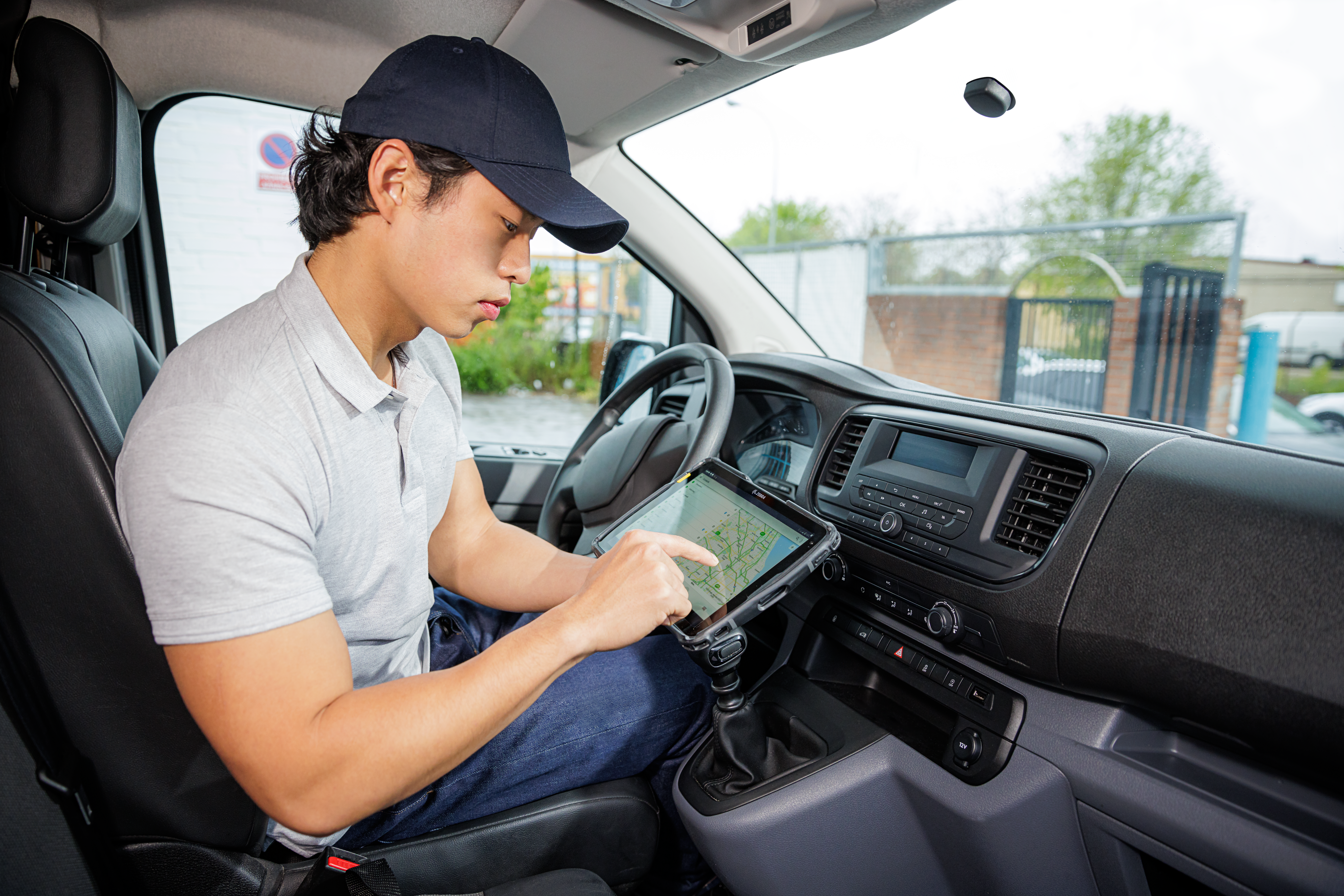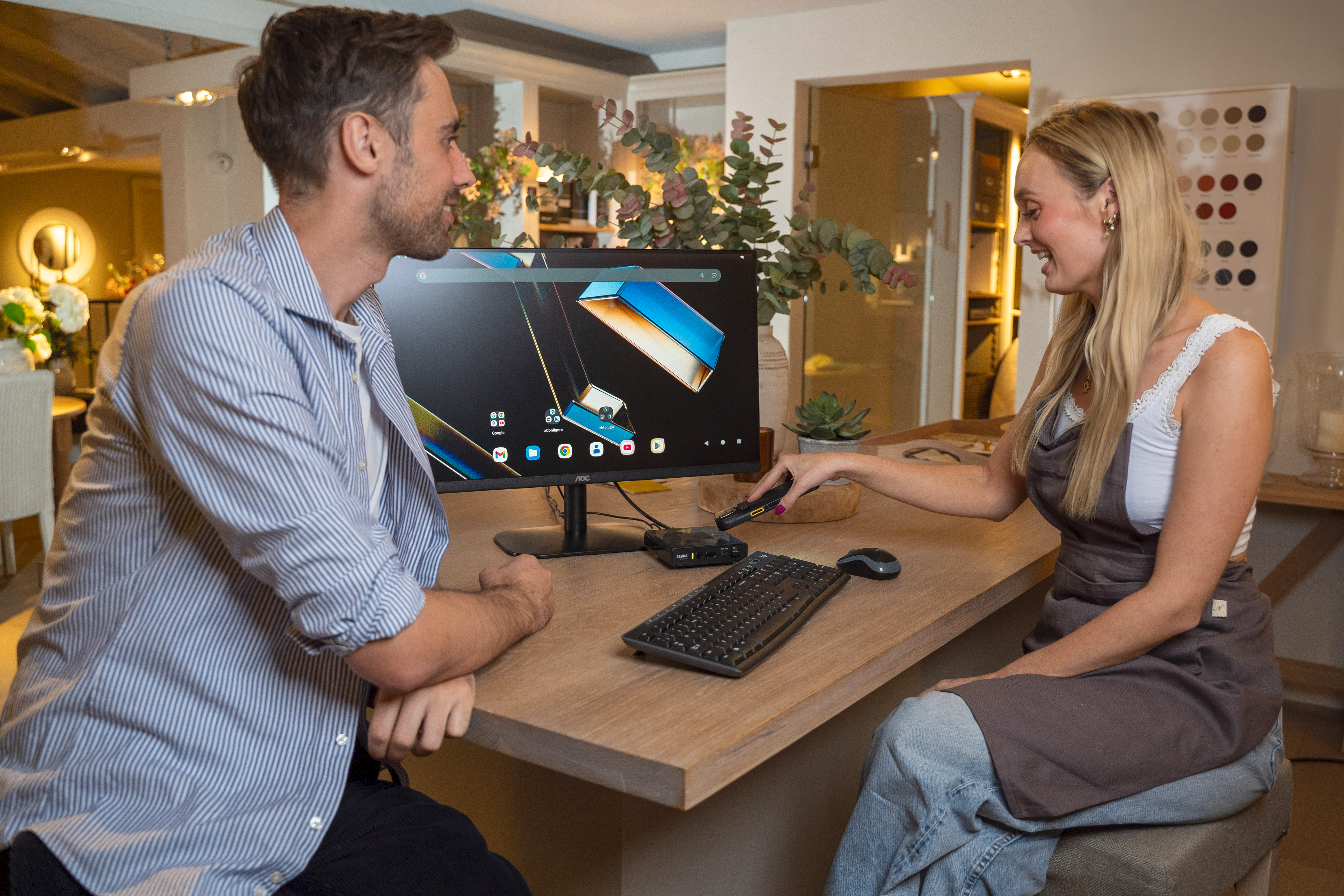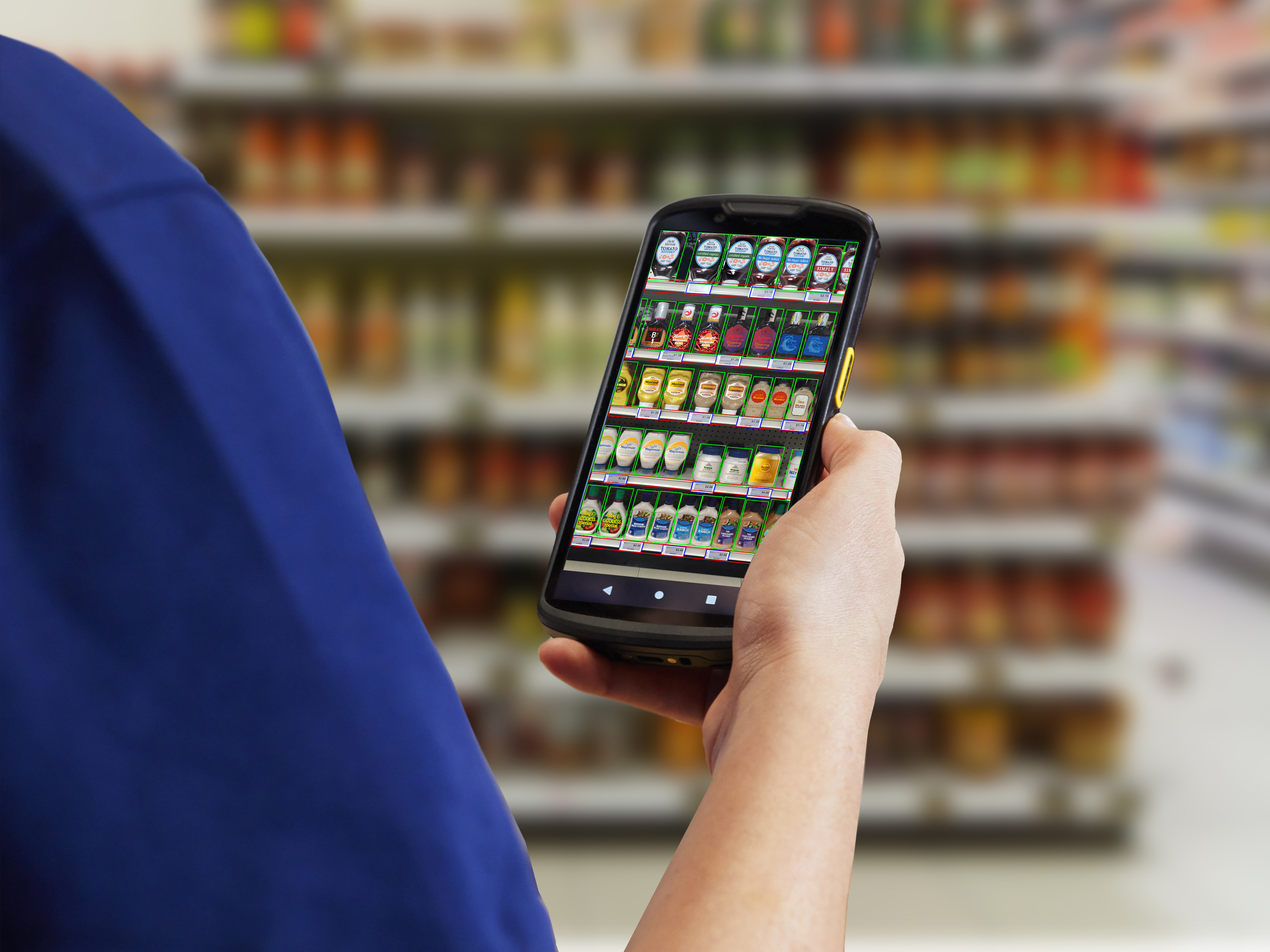Transform retail operations with Zebra’s retail technology solutions, featuring hardware and software for improving inventory management and empowering teams.
Streamline operations with Zebra’s healthcare technology solutions, featuring hardware and software to improve staff collaboration and optimise workflows.
Enhance processes with Zebra’s manufacturing technology solutions, featuring hardware and software for automation, data analysis, and factory connectivity.
Zebra’s transportation and logistics technology solutions feature hardware and software for enhancing route planning, visibility, and automating processes.
Zebra's public sector technology solutions enhance decision-making, streamline operations, and safeguard communities with advanced software and rugged hardware.
Zebra's hospitality technology solutions equip your hotel and restaurant staff to deliver superior customer and guest service through inventory tracking and more.
Zebra's market-leading solutions and products improve customer satisfaction with a lower cost per interaction by keeping service representatives connected with colleagues, customers, management and the tools they use to satisfy customers across the supply chain.
Empower your field workers with purpose-driven mobile technology solutions to help them capture and share critical data in any environment.
Zebra's range of mobile computers equip your workforce with the devices they need from handhelds and tablets to wearables and vehicle-mounted computers.
Zebra's desktop, mobile, industrial, and portable printers for barcode labels, receipts, RFID tags and cards give you smarter ways to track and manage assets.
Zebra's 1D and 2D corded and cordless barcode scanners anticipate any scanning challenge in a variety of environments, whether retail, healthcare, T&L or manufacturing.
Zebra's extensive range of RAIN RFID readers, antennas, and printers give you consistent and accurate tracking.
Choose Zebra's reliable barcode, RFID and card supplies carefully selected to ensure high performance, print quality, durability and readability.
Zebra's rugged tablets and 2-in-1 laptops are thin and lightweight, yet rugged to work wherever you do on familiar and easy-to-use Windows or Android OS.
With Zebra's family of fixed industrial scanners and machine vision technologies, you can tailor your solutions to your environment and applications.
Zebra’s line of kiosks can meet any self-service or digital signage need, from checking prices and stock on an in-aisle store kiosk to fully-featured kiosks that can be deployed on the wall, counter, desktop or floor in a retail store, hotel, airport check-in gate, physician’s office, local government office and more.
Adapt to market shifts, enhance worker productivity and secure long-term growth with AMRs. Deploy, redeploy and optimize autonomous mobile robots with ease.
Discover Zebra’s range of accessories from chargers, communication cables to cases to help you customise your mobile device for optimal efficiency.
Zebra's environmental sensors monitor temperature-sensitive products, offering data insights on environmental conditions across industry applications.
Zebra's location technologies provide real-time tracking for your organisation to better manage and optimise your critical assets and create more efficient workflows.
Enhance frontline operations with Zebra’s AI software solutions, which optimize workflows, streamline processes, and simplify tasks for improved business outcomes.
Empower your frontline with Zebra Companion AI, offering instant, tailored insights and support to streamline operations and enhance productivity.
The everything you need to rapidly and cost effectively develop high-performance AI vision applications on Zebra mobile computers.
Zebra Workcloud, enterprise software solutions boost efficiency, cut costs, improve inventory management, simplify communication and optimize resources.
Keep labour costs low, your talent happy and your organisation compliant. Create an agile operation that can navigate unexpected schedule changes and customer demand to drive sales, satisfy customers and improve your bottom line.
Drive successful enterprise collaboration with prioritized task notifications and improved communication capabilities for easier team collaboration.
Get full visibility of your inventory and automatically pinpoint leaks across all channels.
Reduce uncertainty when you anticipate market volatility. Predict, plan and stay agile to align inventory with shifting demand.
Drive down costs while driving up employee, security, and network performance with software designed to enhance Zebra's wireless infrastructure and mobile solutions.
Explore Zebra’s printer software to integrate, manage and monitor printers easily, maximising IT resources and minimising down time.
Make the most of every stage of your scanning journey from deployment to optimisation. Zebra's barcode scanner software lets you keep devices current and adapt them to your business needs for a stronger ROI across the full lifecycle.
RFID development, demonstration and production software and utilities help you build and manage your RFID deployments more efficiently.
RFID development, demonstration and production software and utilities help you build and manage your RFID deployments more efficiently.
Zebra DNA is the industry’s broadest suite of enterprise software that delivers an ideal experience for all during the entire lifetime of every Zebra device.
Advance your digital transformation and execute your strategic plans with the help of the right location and tracking technology.
Boost warehouse and manufacturing operations with Symmetry, an AMR software for fleet management of Autonomous Mobile Robots and streamlined automation workflows.
The Zebra Aurora suite of machine vision software enables users to solve their track-and-trace, vision inspection and industrial automation needs.
Zebra Aurora Focus brings a new level of simplicity to controlling enterprise-wide manufacturing and logistics automation solutions. With this powerful interface, it’s easy to set up, deploy and run Zebra’s Fixed Industrial Scanners and Machine Vision Smart Cameras, eliminating the need for different tools and reducing training and deployment time.
Aurora Imaging Library™, formerly Matrox Imaging Library, machine-vision software development kit (SDK) has a deep collection of tools for image capture, processing, analysis, annotation, display, and archiving. Code-level customisation starts here.
Aurora Design Assistant™, formerly Matrox Design Assistant, integrated development environment (IDE) is a flowchart-based platform for building machine vision applications, with templates to speed up development and bring solutions online quicker.
Designed for experienced programmers proficient in vision applications, Aurora Vision Library provides the same sophisticated functionality as our Aurora Vision Studio software but presented in programming language.
Aurora Vision Studio, an image processing software for machine & computer vision engineers, allows quick creation, integration & monitoring of powerful OEM vision applications.
Adding innovative tech is critical to your success, but it can be complex and disruptive. Professional Services help you accelerate adoption, and maximise productivity without affecting your workflows, business processes and finances.
Zebra's Managed Service delivers worry-free device management to ensure ultimate uptime for your Zebra Mobile Computers and Printers via dedicated experts.
Find ways you can contact Zebra Technologies’ Support, including Email and Chat, ask a technical question or initiate a Repair Request.
Zebra's Circular Economy Program helps you manage today’s challenges and plan for tomorrow with smart solutions that are good for your budget and the environment.

In part one of this series, I shared my experience attending the HIMSS 2025 healthcare event in Las Vegas which was filled with discussions around the growing adoption of AI in healthcare. One of the panels I attended highlighted its applications in administrative tasks. Here are a couple of other examples:
· A triage nurse's role, we are told, is to ask questions and assess risk and then act accordingly. AI predictive algorithms supporting nurses could lead to a better tailored treatment plan. For example, some patients could be allowed home faster than those with multimorbidity, thereby freeing a bed for someone in need.
· AI can also be used when it comes to patient waiting times. By using historical data, scheduling trends, and patient flow analytics, it can forecast wait times. AI can balance capacity by identifying underused facilities, redistributing non-urgent referrals, and assessing clinical data to fast-track urgent cases. Waiting lists can be spread around regions, and patients can select the best provider for surgical and elective care which means they can choose to wait a bit longer for a perceived better delivery.
AI integration needs to be simple, as not all clinicians are computer whiz kids. They are great at patient care; they don't want dashboards to ponder over. They want the answer so they can move on to the next task. And this is a benefit of AI. It simulates understanding to let non-technical users access what is in the box. A panel speaker compares seamless adoption to a small child getting Alexa to play "The Baby Shark Song." If things are easy, behavioural change is easy too.
Healthcare workers are also consumers, and the trends, apps and behaviours we see in the B2C world are being replicated in the workplace. There are wearables for sports training and therapy apps accessible on-demand through a chatbot, quizzes to check info is being absorbed, dashboards to monitor wellbeing, and checklists help structure recovery.
Clinical mobile devices used in hospitals or in the field have sophisticated, enterprise-grade data capture - voice, camera, text - plus they can be equipped with barcode scanners and even radio frequency identification scanning. The growth in data capture and digital health is the perfect environment for more AI innovation.
The ability to record data is important to monitor recovery. Nurses are photographing wounds to check over time. Something I picked up from chatting with customers was that family and friends are sometimes averse to watching clinicians putting data into their phones. It can look like they are playing on them as opposed to attending to an often very sick friend or relative.
I heard about some hospitals resorting to putting posters around to advise they are work tools. Others prefer to go down the route of utilising devices that look clinical. Zebra's healthcare products are blue – designed to highlight dirt so they can be cleaned, but also to ensure the devices look clinical, not like personal devices.
AI is leveraging machine learning models trained on vast datasets of wound images and clinical records. It is already improving wound diagnostics, predicting complications, and optimising dressing materials. But to work, apps, videos and images need space, and processing power. Using the right device designed for healthcare environments with carefully managed data use is an important consideration.
Another possible issue is connectivity, as there is a movement toward greater care in the community. Mobile computers out in the community field – patient homes – can support any number of patient processes, but connectivity is essential. The latest generation of mobile computers are 5G-enabled, but the reality is the 5G infrastructure is still catching up.
Some of my friends in healthcare spoke of areas in deepest rural UK where the network only has 2G. So offline collation must be possible with synchronisation done later. It is important to be able to work offline during these periods and sync the data at the first opportunity.
We also discussed ethical issues around AI. For example, AI models providing recommendations and decisions for things like treatments plans, accountability, human oversight, and the levels of AI model training, quality and trust needed. And no discussion around AI would be complete without a focus on data volume, quality, and the need for healthcare data to reflect the range of demographics within populations.
AI is less likely to put an extra 0 on a dosage or mix up patients, but its output is only as good as the data it synthesises. If it makes a mistake, who is ultimately accountable? And if it does become the perfect mechanism for diagnosing and predicting outcomes, do patients always want to know? Ignorance may be a happier place for some.
For AI to grow into a healthy supportive tool, it is important to develop a culture of transparency, within and across disparate organisations and to learn together. Ultimately, it needs to add value to the patient experience and improve outcomes.
The group also discussed how healthcare is not just about what the doctor says; it is based on a two-way communication with the patient. The patient is the consistent factor as they are there 100% of the time, aware of how they are feeling and able to report changes for better or worse. This is why the 10-minute patient collaboration is a critical part of the treatment process, and one that should not be removed lightly.
In some areas, the patient may even know more than the doctor. Once you or a family member is diagnosed, you immediately head to the internet to learn about the illness, treatment and outcomes (like my family did when my dad was diagnosed with lung cancer.) You become aware of new treatments, drug availability and the wider healthcare ecosystem with the time to focus and connect the dots.
In Conclusion
AI is here to stay. It can help clinicians be more efficient with their time and improve outcomes if it is used carefully, based on good data and synthesised on hardware with the right processing capacity. Transformation is always disruptive but long term, this could deliver better diagnosis, better and more tailored treatment plans plus give time back to clinicians to put back into patient care.
For AI to integrate effectively, it is important to have a governance framework in place with continuous monitoring and feedback to ensure patient safety. Staff must be trained and educated on its benefits and limits. Real world examples are already showing successful outcomes. But the fundamentals remain the same as those for patient care outside of the digital realm. Risk assessments and mitigation strategies must be undertaken for any patient safety-related decisions.
Investing in AI is not a gamble. AI-supported healthcare will be both slicker and smarter, and similar to how the internet changed industries, AI will be the next industrial revolution. The patient needs to be at the centre of everything, and AI must not interfere with this hierarchy. It is there to support –not replace – human engagement.
Zebra Developer Blog
Zebra Developer BlogZebra Developer Blog
Are you a Zebra Developer? Find more technical discussions on our Developer Portal blog.
Zebra Story Hub
Zebra Story HubZebra Story Hub
Looking for more expert insights? Visit the Zebra Story Hub for more interviews, news, and industry trend analysis.
Search the Blog
Search the BlogSearch the Blog
Use the below link to search all of our blog posts.
Most Recent
Legal Terms of Use Privacy Policy Supply Chain Transparency
ZEBRA and the stylized Zebra head are trademarks of Zebra Technologies Corp., registered in many jurisdictions worldwide. All other trademarks are the property of their respective owners. ©2025 Zebra Technologies Corp. and/or its affiliates.




